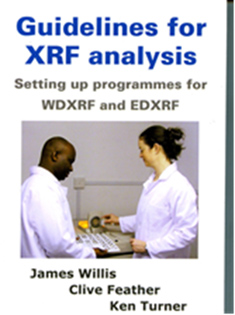
Book review for a book by J. Willis, C. Feather и K. Turner “Guidelines for XRF Analysis. Setting up programmes for WDXRF and EDXRF”. Printed in South Africa by Shumani Mills Communications”, 2014, 519 pp. ISBN 978-0-620-62961-4
Аннотация
X-ray fluorescence analysis finds wide application in various fields of knowledge and industries. One of the features of the development of the method at the present stage is a significant excess of the production of X-ray spectrometers in comparison with the training of specialists who have the knowledge for the competent use of equipment. As a result, manuals and reference books are of great importance, which help to correctly choose the optimal conditions for measuring the intensities of the analytical lines of the elements to be determined and methods of converting the experimental intensities into concentrations. The paper provides information about the book by M.J. Willis, C. Feather and K. Turner “Guidelines for XRF Analysis. Setting up programs for WDXRF and EDXRF”. The material is presented on 518 pages, illustrated with 250 figures and contains 131 tables. The review discusses the material presented in chapters. The first 7 chapters of the book provide information on the theoretical and technical foundations of XRF. In the most voluminous sixth chapter “Setting up an Analytical Programme”, information on the aspects of the choice of instrumental parameters, analytical lines, angular positions for evaluating the background intensity and the contribution of spectral overlaps is consistently presented. The second section discusses recommendations for the selection of analytical parameters for investigating the concentrations of individual elements from F to U, usually determined using XRF at the trace level (Chapters 8-15). In the third section, the authors similarly considered recommendations for the selection of analytical parameters for investigating the concentrations of individual elements for specific typical materials (chapters 17-31). The authors have prepared a good quality reference guide useful for both beginners and skilled professionals.
Key words: X-ray fluorescence spectroscopy, guidelines for XRF analysis, review of book.
DOI: http://dx.doi.org/10.15826/analitika.2020.24.4.007
A.G. Revenko
Institute of the Earth’s Crust, SB RAS, ul. Lermontova, 128, Irkutsk, 664033, Russian Federation
Полный текст:
PDFЛитература
REFERENCE
Feather C.E., Willis J.P. A simple method for background and matrix correction of spectral peaks in trace element determination by X-ray fluorescence spectrometry. X-Ray Spectrom., 1976, vol. 5, no. 1, pp. 41–48. doi: 10.1002/xrs.1300050110
Revenko A.G., Suvorova D.S., Khudonogova E.V. [Investigation of filter applicability for XRF analysis in the longwave range]. Analitika i kontrol’ [Analytics and control], 2018, vol. 22, no. 2, pp. 117-127. doi: 10.15826/analitika.2018.22.2.009
Ссылки
- На текущий момент ссылки отсутствуют.
